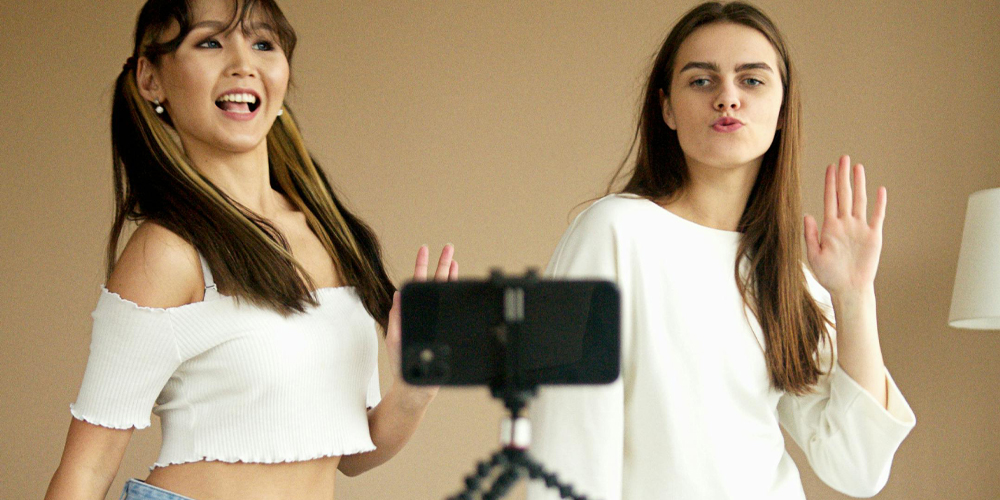TikTok has significantly transformed the way people consume and engage with content. In little more than a year, it has been remade from a video-sharing service used for lip-syncing and dance challenges into a worldwide driver of creativity, entertainment, and even social change. TikTok has transformed how people engage with social media by overlaying short-form video content with an intuitive UI and powerful algorithms. In this article, we’re going to examine the key ways TikTok has reshaped the game and why it is a cultural behemoth.
The Rise of TikTok
TikTok’s story starts in China in 2016 with the launch of an app called Douyin, which was renamed TikTok upon its international debut. It went through massive growth, then some post-bubble downward adjustment and eventually some new growth after merging with the short-video app Musical. In 2018, TikTok grew at an unprecedented rate, soon to be one of the most used apps around the world. Whereas platforms such as Instagram or Facebook depend heavily on static text and photos, TikTok focuses on video content, making it much more visceral and exciting when done right.
TikTok is a unique platform, where its video-based content is general, but its accessibility is what makes TikTok so special. All it takes is a smartphone to make a video, and any user can do that without needing professional gear. TikTok’s viral potential also means even accounts with zero followers can see their content receive huge exposure overnight. This enables the democratization of content creation, one of the reasons that TikTok has taken off.
How TikTok’s Algorithm Helped People Discover Content
One of TikTok‘s defining features is its algorithm, a powerful tool for determining what users will see. So what exactly is the For You Page (or FYP for short) then? Videos are curated for this page according to interests, not follower counts. This is markedly different than other platforms like Instagram, which hone in on social networks and who-follow-who.
TikTok‘s algorithm is so successful that it learns from people, and recommends content based on likes, shares, and how much time we spent watching a specific video. This provides users with an endless amount of personalized content, which keeps them engaged and incentivizes keeping the app open longer. This gives TikTok a fun environment that encourages the viral nature of the content; it doesn’t matter who created it, as long as it’s funny.
Plus, the platform is less concerned with polished or professionally produced video. Instead, it is more concerned with creativity and originality, giving users the freedom to play with different formats. Whether it’s a comedy sketch, a dance challenge, or a beauty tutorial, TikTok allows users to easily deliver content in an entertaining way. By prioritizing user-generated content, TikTok has given rise to a new breed of content creator, allowing anyone to become a viral star.

How User-Generated Content Can Help You
TikTok‘s primary driving force is User-Generated Content (UGC). While other platforms might offer posting photos, text, or stories, TikTok’s format inherently suggests dynamic, engaging content. It also allows the users to go creative and do all sorts of things that they find interesting to create music, special effects, and filters.
That’s the power that UGC holds on TikTok. Users frequently generate and take part in viral trends that can go global within hours. By using creative challenges, people generate content that connects with others around the platform. TikTok is known for dance routines to popular songs, but there are just as effective, if not more so, educational, motivational, and lifestyle content formats.
This format has made it possible for TikTok to be more than an entertainment platform. It is a place for creativity, storytelling, and socializing. Now, people of all ages and backgrounds are engaging with trends, producing content that resonates with their interests, their personalities, and their perspectives. TikTok basically turned into a platform for regular people to show their talent and creativity to the world.
Effects of TikTok on Other Platforms
Rapid growth of TikTok has affected other social media platforms making them adopt and come up with the same features. For example, Instagram launched Reels, YouTube debuted Shorts, and Facebook developed Stories—all in a bid to capture a piece of TikTok’s success.
Instagram Reels: Direct Competition
Instagram Reels, which launched in 2020, may be the most direct competitor to TikTok. Reels lets users create 15-second videos from TikTok, and also offers music and effects. But even though Instagram has such a huge user base, Reels hasn’t matched TikTok’s viral success. This is largely because Instagram is still heavily based around a follower-based system, while TikTok emphasizes content discovery from algorithmic recommendations.
Instagram is recognized for its photo-sharing and more structured content, whereas TikTok has mastered the art of viral trends and spontaneous video creation. Hence, although Reels has introduced a short-form video feature, it still lags behind TikTok in terms of dynamic community-driven video posting.
Revolutionizing Short-Form Video with YouTube Shorts
YouTube, which is another social media heavyweight, played a game similar to this one in response to TikTok’s rise with YouTube Shorts. Shorts enables users to make 60-second vertical videos. But YouTube is a long-form platform, and its commitment to short-form videos is nascent at best. Although YouTube has a far superior structure for creators to monetize in comparison to TikTok, the platform has found it harder to produce viral content and algorithm-driven immersive discovery like you can find on TikTok.
Unlike TikTok, which revolves completely around content virality and engagement, YouTube Shorts still lacks that full YouTube integration that would give it as a platform the same level of users’ attention.
Alternatives and the Power of TikTok
While Facebook and Twitter have released short-form video features, neither has been able to match TikTok’s popularity. Facebook’s Stories feature, which debuted in 2016, was certainly inspired by Snapchat’s, but it also borrowed from TikTok’s short-form video concept. But stories on Facebook have not caught on as well as TikTok’s FYP. The same goes for Twitter’s Fleets experiment, which ultimately fizzled out due to its lack of viral discovery or algorithmic support.
These platforms are stuck on features of social media engagement, and TikTok is leaping, establishing itself as the top destination for viral content and user-born creativity.

TikTok’s Cultural Influence
TikTok has grown into a cultural powerhouse that is shaping everything from music and fashion to social justice activism. It has also been a breeding ground for new trends to coalesce rapidly and for creators to articulate thoughts in ways that were never thought possible.
Dance Challenges and Music Trends
TikTok is all about viral music trends and dance challenges. Songs that catch on at the platform frequently spike the charts. For instance, songs such as Old Town Road by Lil Nas X and Savage Love by Jawsh 685 and Jason Derulo became popular after they were tied to viral TikTok dance challenges. These developments have supported the likes of new acts and cuts, in ways that old styles of music promotion could not do.
Beyond music, TikTok has also brought a barrage of viral dance moves, some of which go on to become globally ubiquitous. TikTok‘s viral dance challenges have allowed people to engage in creative and physical expression, building community approaches to their shared experiences.
Fashion and Style Influence
TikTok also became a new force of fashion. Thanks to influencers, creators, and everyday users, the platform has launched new styles, trends, and fashion hacks. TikTok moves quickly, with trends often changing in days or weeks. It has been a thrilling zone for the fashion-forward to follow the rapid pace and glean new, razor-sharp looks.
Activism and Social Change
In addition to its role in entertainment, TikTok has also become a powerful tool of activism and a force for social change. TikTok users have used the app’s worldwide reach to raise awareness of a number of social issues, such as racial equity, climate change and mental health. TikTok has given young people the power to use their voices to help make the world a better place, have had protests and shine a light on issues that are important to them.
Conclusion
As a result, TikTok has profoundly impacted social media. Its algorithm, focus on user-generated content, and viral potential have redefined how content is created, shared, and discovered online. TikTok’s influence on other platforms, such as Instagram and YouTube, highlights its success and the shift in how content is consumed. Moreover, TikTok’s cultural impact—on music, fashion, and activism—demonstrates its ability to shape trends and spark global conversations.
As TikTok continues to innovate and grow, it is likely to remain at the forefront of digital culture. The platform’s unique combination of creativity, discovery, and user engagement has set a new standard for what social media can achieve. TikTok is not just changing the way we interact with content; it’s changing the way we connect with each other on a global scale.